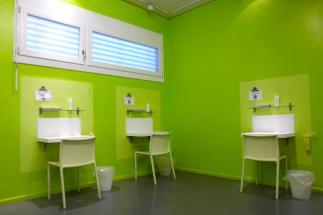SWISS HEROIN-ASSISTED TREATMENT 1994- 2016: SUMMARY

Addiction Law, History and Public Policy Articles
Addiction Research Articles
Heroin Research
Addiction Treatment Articles
Opioid Addiction Treatment
Overview
Originally Published: 02/26/2016
Post Date: 02/26/2016
Source Publication: Click here
by Howard Wooldridge - LEAP | Swiss Institute for Addiction Research
Summary/Abstract
An overview of Switzerlands Heroin Assisted Treatment programs and policys and outcome data demonstrating HAT's efficacy as a treatment for chronic opioid addicts.
Content
SWISS HEROIN-ASSISTED TREATMENT 1994- 2016: SUMMARY
Overview: Due to the severe drug problem in Switzerland in the early 1990s, (rising number of injection drug users, visibility of open drug scenes, AIDS epidemic, rising number of drug related deaths, poor physical health, high criminality) the Swiss made a fundamental shift in approaching the problems caused by heroin addiction. The Swiss offer treatment-on-demand. Of an estimated 22-24,000 addicts (dropping 4% per year) 16,500 are in treatment and 92% are given daily doses of primarily methadone at conventional clinics. The Swiss treat about 1300 addicts with maintenance doses of heroin via 23 special clinics operating in cities and two prisons. The Swiss approach has resulted in lower rates of crime, death, disease, a slight drop in expected new users as well as an improvement in mental and physical health, employment and housing. The program has been adopted by three countries: Germany, Belgium and Denmark. Four countries are running trials = Holland, England, Spain and Canada.
* To qualify for a heroin prescription:
1) at least 18 years old;
2) been addicted (daily use) for at least two years;
3) present signs of poor health;
4) two or more failed attempts of conventional treatment (methadone or other);
5) Surrender drivers license;
6) Heroin can only be obtained at the clinic and must be consumed on site (oral or injection). (Note: Under strict control and specific criteria [for example full employment] a few are allowed to take one oral dose daily away.)
- Patients average about three (3) years in this plan. However, they may stay in treatment indefinitely. 20% of original patients are still in the program.
- The vast majority of patients are satis
- Patients can receive up to three doses of heroin per day. 66% take the heroin via needle injection, the rest via pill or liquid heroin mixed with juice.
- Satisfied or very satisfied with the program.
- Average age of patient: 39 years.
*Crime Issues: 60% drop in felony crimes by patients (80% drop after one year in the program). 82% drop in patients selling heroin.
*Death Rates: No one has died from a heroin overdose since the inception of the program. The heroin used is inspected for purity and strength by technicians.
*Disease Rates: New infections of Hepatitis and HIV have been reduced for patients in the program.
*New Use Rates: Slightly lower than expected. 1) As reported in the Lancet June 3, 2006, the medicalisation of using heroin has tarnished the image of heroin and made it unattractive to young people. 2) Most new users are introduced to heroin by members of their social group and 50% of users also deal to support their habit. Therefore, with so many users/sellers in treatment, non-users have fewer opportunities to be exposed to heroin, especially in the rural areas.
*Cost Issues: 48 dollars/day: Patient costs are covered by national health insurance agency. Patients pay 700 dollars/year for the compulsory insurance. Note: The Swiss save about 38 dollars per day per patient mostly in lowered costs for court and police time, due to less crime committed by the patients.
*In December 2008 the Swiss voted (68%-32%) to make the program part of their body of laws.
** This summary was taken from six published reports. The Swiss Federal Office of Public Health reviewed and approved its release. Additional questions should be directed to Howard Wooldridge. NOTE: This summary was researched and written by Howard J. Wooldridge Co-Founder of LEAP.
Heroin statistics
In Switzerland there are 22 official heroin distribution centres, 21 in German-speaking Switzerland and one in Geneva. Two are inside prisons.
When heroin-assisted treatment was introduced in 1994, just 400 people signed up. Two years later the programme had 1,000 addicts on the books, and over the past ten years the numbers have remained stable at around 1,500 (in 2012, it was 1,578, of which 391 were women).
In 1994, 77.5% of heroin recipients were under 35. In 2011 only 17.4% were under 35. In 2012 the average age was 42.2. The age range is between 20 and 75.
Since 2005 there have been 100 to 150 new cases per year. In 2012, the average age of new entrants to the heroin programme was slightly over 37.
50% of heroin patients remain at least two-and-a-half years in the programme and 20% for at least 15 years.
Most new entrants in the last 10 years were single (75%), while about 8% are married. The rest are separated, divorced or widowed. The proportion of women is 20-25%.
The proportion of non-Swiss heroin recipients rose from 12% in 2000 to 18% in 2011. The proportion of non-Swiss citizens in the resident population as a whole is 23%.
The proportion of HIV patients has been stable for ten years at around 10-15%.
(Source: Swiss Institute for Addiction Research)





